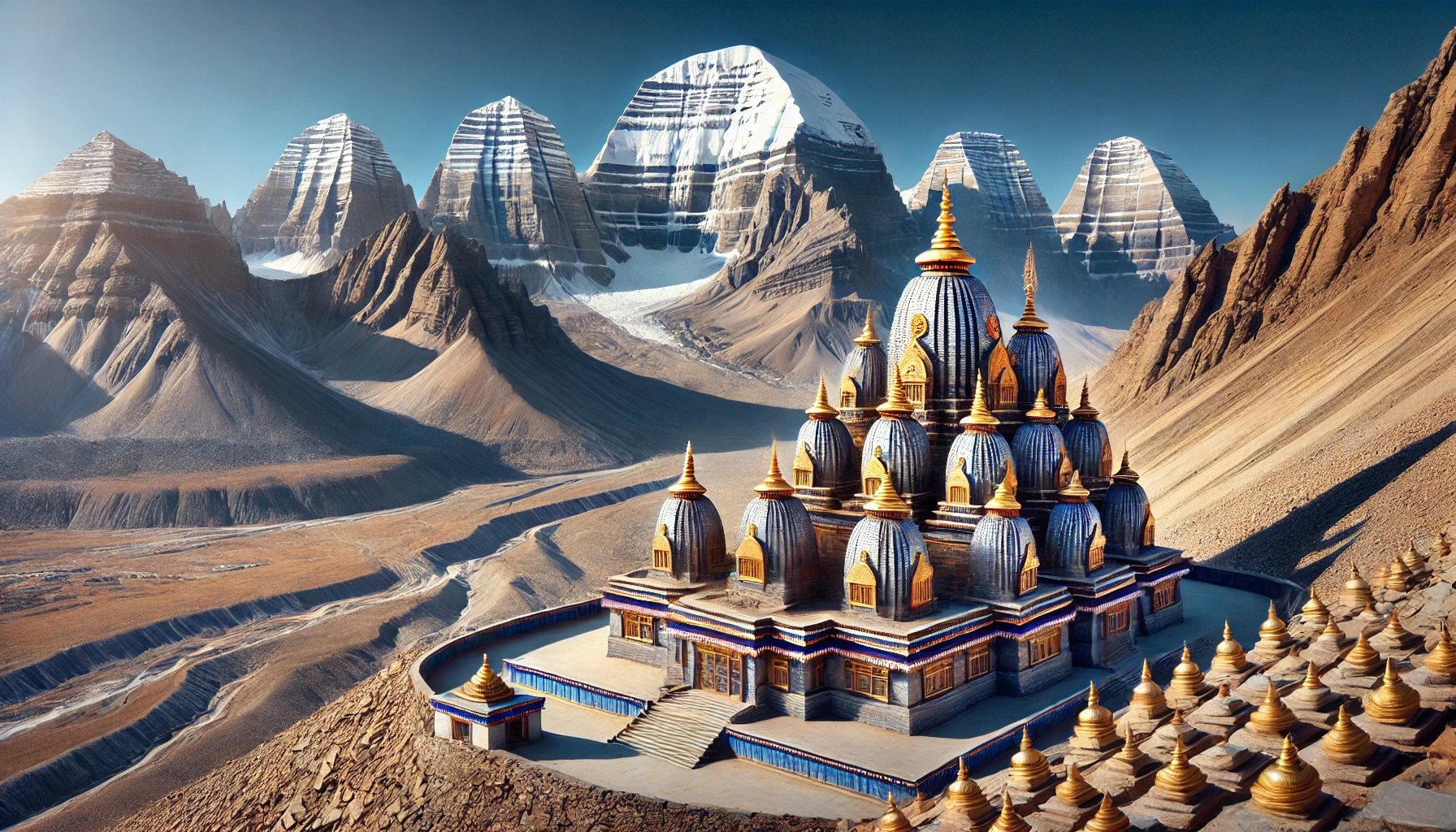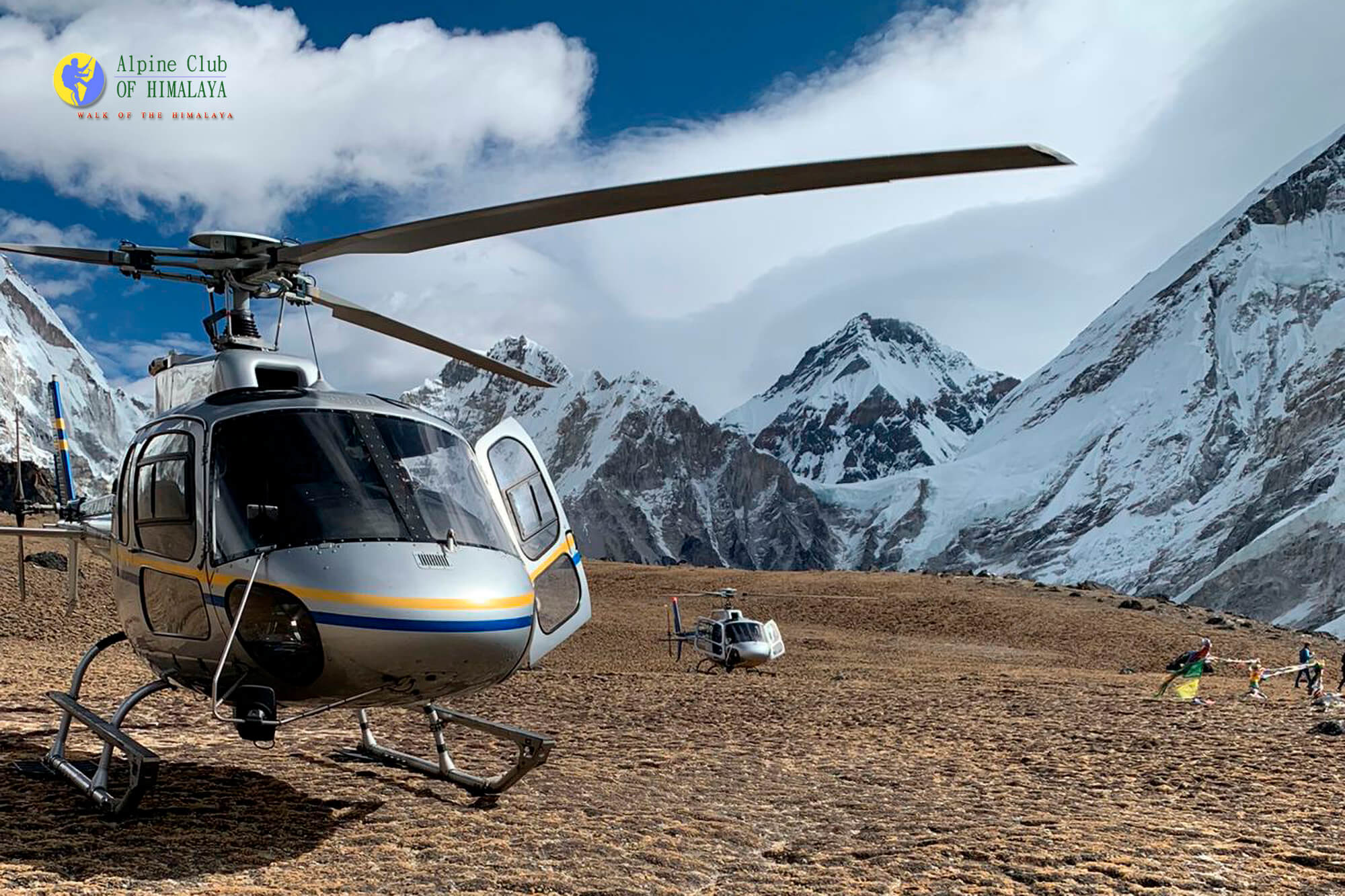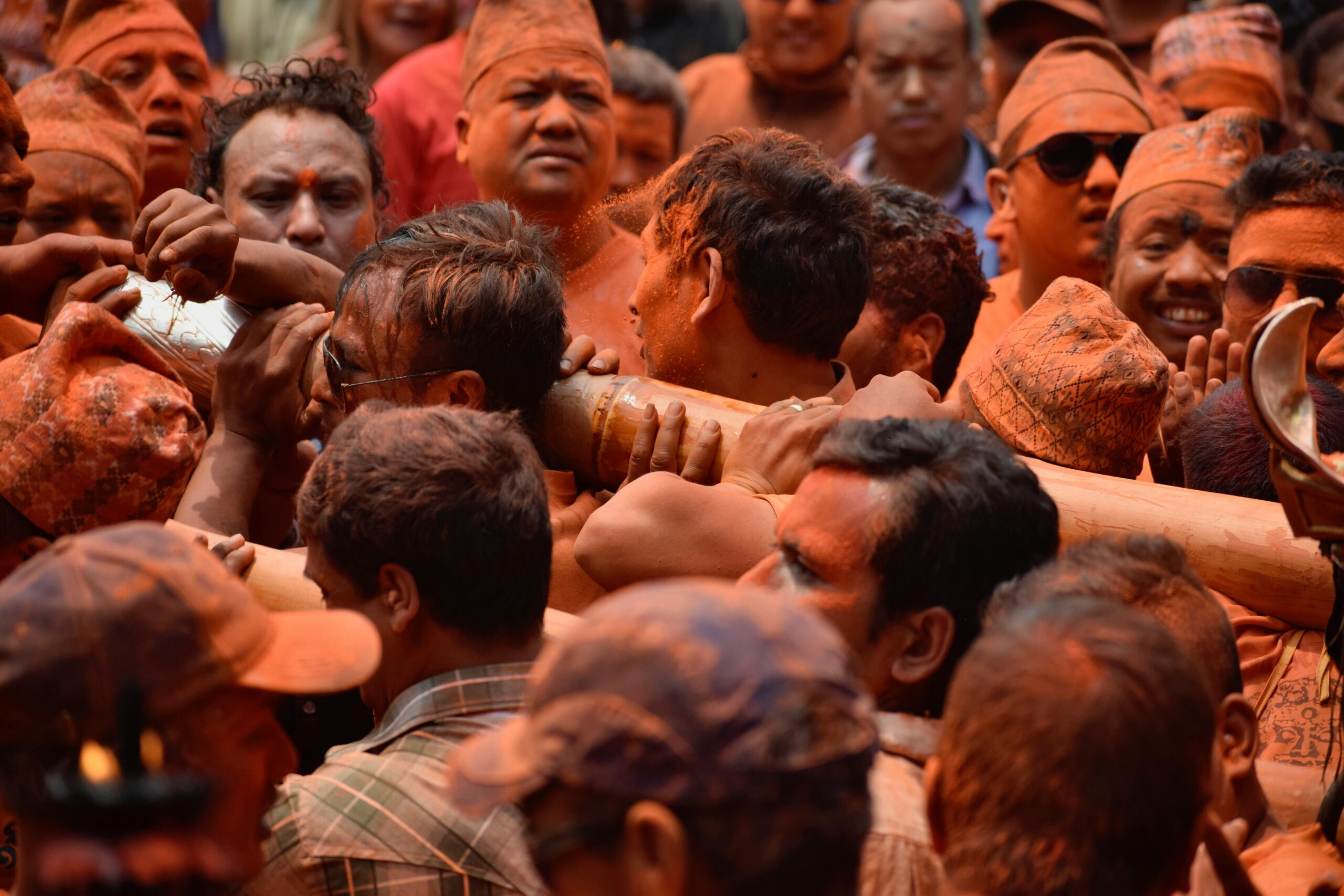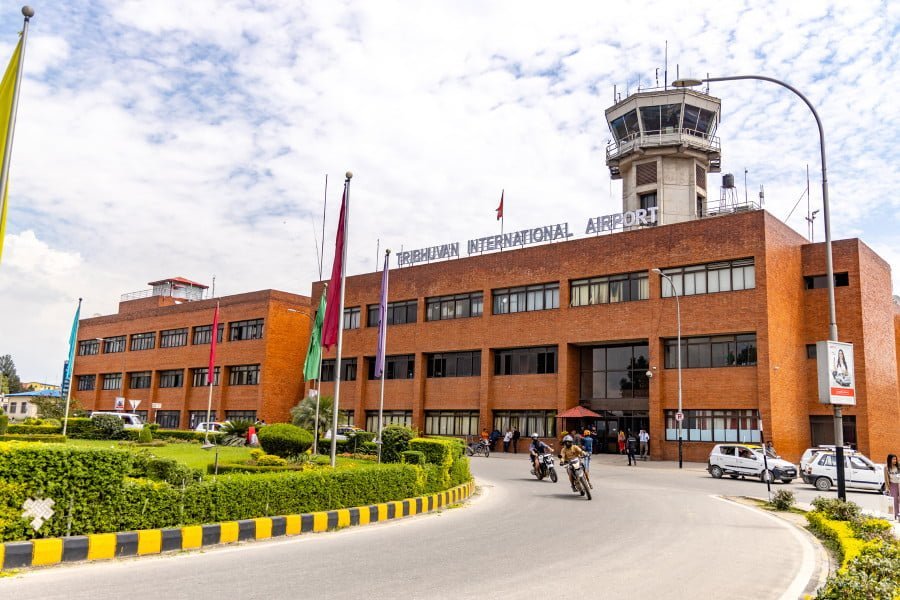Dhaulagiri Expedition – Dhaulagiri is the seventh-highest peak in the world. At an elevation of 8,167 meters/ 26,795 feet above sea level is the highest mountain within the borders of a single country. At the foothills of the Himalayas, navigating through jungles, chasing rivers, crossing moraines, and passing head to Dhaulagiri Base Camp. A big territory with very few inhabitants clinging to the mountainside, in the frozen peaks of the Himalayas. Next, scale the peak itself.
Dhaulagiri was the first successful ascent achieved in 1960. The mountain boasts an unparalleled size, rising over 7000 m above the Kali Gandaki Valley and stretching over 30km in length. The majority of climbers take the “Normal Route,”. The route of the first ascent, though there have been successful climbs from various directions. The Dhaulagiri massif comprises five ridges and two faces in the South and Western aspects. With each rising to a height of 4000m from their respective base camps. The peak has five summit peaks, including Dhaulagiri I (8167m), Dhaulagiri II (7751m), Dhaulagiri III (7715m), Dhaulagiri IV (7661m), and Dhaulagiri V (7618m).
The Alpine Club of Himalaya, Dhaulagiri Expedition is the perfect way to explore the mountain giant. Our services are available for both groups and individual climbers and prioritize safe and secure climbing in a supportive and friendly environment. We provide a comprehensive service package, including necessary permits, documentation, transportation, porters, and other individual needs. On the trek to the advanced base camp (ABC), we provide accommodation and meals. In the base camp, we provide personal tents, dining and kitchen tents, toilet and shower facilities, and staff accommodation. All are equipped with expedition-quality amenities.
The typical climb of Dhaulagiri follows the Northeast Ridge route. Four camps were set up above the base camp: Advanced Base Camp (5300m), Camp I (5900m), Camp II (6400m), Camp III (7200m), and Camp IV (7500m).
Dhaulagiri Expedition not only takes you across extraordinary landscapes. But also, is a perfect opportunity to learn about the ancient culture and traditions of rural Nepal. In a world where traditions and culture are vanishing so quickly, here visit communities of rare beauty, great strength, and extreme fragility. Be a part of this Dhaulagiri Expedition with the Alpine Club of Himalaya capturing your imagination.
Dhaulagiri Expedition – Northeast Ridge Climbing Route:
Dhaulagiri Advanced Base Camp (4748 Meters/15,577 Feet):
Alpine Club of Himalaya Dhaulagiri Expeditions runs both during the autumn and spring seasons, typically via the Northeast Ridge route. However, groups of at least 5-6 individuals can request alternative routes via the Southeast, Southwest, and Northwest.
The approach to the mountain begins south of Dhaulagiri, trekking through the Majhangdi Khola and eventually reaching the base camp located across from the Eiger, a prominent rock tower known for producing avalanches. The first part of the climb involves a trek up an icefall towards the saddle between Dhaulagiri and Tukche-Ri, followed by the ascent up the Northeast ridge.
Alpine Club of Himalaya advanced base camp is established for approximately one month and serves as a home away from home for climbers. The camp includes personal tents, a dining tent, a common area, a shower tent, and a toilet tent. The base camp staff and high altitude climbing Sherpas will be on hand to provide support, and hot beverages and snacks will be available upon arrival.
Before the climbing period, a Puja ceremony will be held for good luck, a traditional Nepalese tradition to ensure a safe climbing experience for all involved in the expedition.
Dhaulagiri Camp I (5,450 Meters/21,000 Feet) 4-5 Hours:
Upon completion of basic and advanced training with your climbing guide, you will be prepared for your ascent to Camp I (5450m/21,000ft). This section of the climb presents mixed terrain, including the moderately technical Jacobs Ladder, a limestone and snow climb located in the first section of the ridge. In the past, the top of the ladder served as Camp II, but the 1960 expedition established an intermediate camp near the top of the icefall. The climb also involves traversing grassy slopes, rock slabs, and a moraine, with the first section of the moraine ascent taking approximately two hours and requiring the use of fixed ropes over a distance of 200m at a slope of 35-40º.
Dhaulagiri Camp II (6,400 Meters/20,997 Feet) 2-3 Hours:
The ascent from Camp I to Camp II constitutes the intermediate portion of the route, featuring a combination of ice and mixed climbing. Compared to other centers, the distance between Camp I and Camp II is considered safer and more manageable. This section presents the core of the ice and snow terrain, starting with a relatively straightforward two-hour slog over snow before encountering steep sections of blue ice with a slope of 35-40º. These sections, which extend for 50-60 meters, do not require ladders and present the crux of the route for many climbers. Camp II is situated above a snowy terrace.
Dhaulagiri Camp III (7,400 Meters/ 24,278 Feet) 4-5 Hours:
The ascent from Camp II to Camp III spans a considerable distance of 1000m/3,281ft and requires fixed ropes throughout the route. This section of the climb is widely perceived as being safer and more manageable due to the extensive use of fixed ropes. However, it should not be underestimated, as it involves climbing sustained slopes, exposure to cold and wind, and potential for avalanches in the spring season. The climbing in this section is characterized by a 35-45º slope of blue ice and snow and typically takes 4 hours to complete.
Dhaulagiri Summit (8,167 Meters/26,795 Feet) 16-17 Hours:
The summit day is the culmination of the climbing endeavor, with most climbers commencing their ascent between 11:00 p.m. and 1:00 a.m. If the conditions are favorable, they can expect to reach the summit between 7:00 a.m. and 10:00 a.m. The ascent involves traversing a prominent peak and a false summit, followed by an exposed ridge leading to the summit.
Return Route:
The return journey from the summit to Camp III takes approximately 4 hours, and another 3 hours to reach Camp II for an overnight stay. The route entails the utilization of approximately 900 meters of fixed ropes on a 35-50º slope, including 400 meters above Camp III and below the serac, another 400 meters above the serac and below the false summit, and 100 meters more. As the ascent progresses, the terrain becomes increasingly challenging, transitioning from blue ice and snow to more technical headwalls and basins. Following the route, you will eventually reach the Base Camp.
Entry fee and Permits for Dhaulagiri Expedition:
The following permits are required for trekking to Dhaulagiri Region.
- ACAP entry permit fee for foreigners: 3,000 NPR (Approx. US $30)
- ACAP entry permit fee for SAARC nationals: 200 NPR
TIMS Permit :
- NRP 1,000 per person for organized treks through an agency
- NRP 2,000 per person for independent trekkers (going without a guide or porter)
Climbing Fee:
- Spring = $ 1,800
- Summer = $ 900
- Winter = $ 450
Note: All the trekking permits are handled by the Alpine Club of Himalaya.
Accommodation:
You will be accommodated in 3-star hotels in Kathmandu. During the trek, we will be staying at lodges/ teahouses providing basic facilities. At some locations, you will be staying in makeshift camps.
Meals and drinking water:
Along the Dhaulagiri Trek, you will be provided with various Nepali and Tibetan ethnic cuisines. The region has several tea-house along the trail run by local inhabitants providing basic and minimal facilities.
However, drinking water taps are accessible with natural water supplies all along the trekking trail that are untreated. So direct use of the water is not recommended. You may refill boiling water or cold filter water from any of the teahouses along the trail.
If you buy a water purification tablet, chlorine drops or utilize SODIS (sunlight assisted) filtration procedures for further assurance, saving money, and reducing plastic pollution.
Best Time to Visit for Dhaulagiri Expedition?
The best season for trekking in Dhaulagiri Region is during autumn and spring.
The months of September, October, November, March, April, and May are the best time to visit. These months are better in terms of visibility and climate conditions.
During the autumn season, the months of September, October, and November are one of the best times for trekking in this region. The clear weather brings great visibility of the endless mountain ranges and lush green forest with warm temperatures. The nights are clear and are a perfect opportunity for stargazing.
The spring season of March, April, and May is also the best time to visit the Annapurna Region, the end of the winter season brings a change in the region, varieties of colorful blooming trees of the sub-alpine forest, high green pasture lands covered with wildflowers, mild temperatures, and clear weather. In this season you will witness herds of sheep and yaks grazing in the green high lands.
Monsoon season is not favorable as the weather gets harsh and it’s hard to get around the country, with frequent rainstorms and landslides. So, monsoon season is mostly avoided by trekkers.
In the winter season. Manaslu Region receives high snowfall covering most of the trails and making it impossible to travel for this reason.
Travel Insurance:
All clients participating in any activity must have travel insurance. Personal injury, death, hospital expenditures, repatriation fees, and helicopter rescue. Any other disease covered by the insurance plan will be given. We highly advise you to acquire a comprehensive insurance plan from a trustworthy insurance company.
Passport and Visa:
Every client must have a valid passport from the return date with a 6 month prior validity by the Nepalese consulate in your country or the immigration office at Tribhuvan International Airport in Kathmandu.
Equipment lists for Dhaulagiri Expedition:
General Equipment required:
- Find the guidelines regarding essential trekking gear.
- Daypack above 40 liters. (Must be waterproof)
- Down jacket (rental available)
- Warm sleeping bag (rental available)
- Sun head, gulf cap, sunglasses, headlamp, and torchlight.
- Ear-muffs, wooly Hat, Fleece Balaclava
- Sun Lotions/sun cream.
- One pair of liner gloves is thin wool and synthetic.
- Cotton t-shirts, Synthetic t-shirts.
- Thermal Top, Fleece Sallopettes, Thin Fleece
- Body Warmer – Thick Fleece -Schoeller Trousers
- Long sleeve polyester or synthetic lightweight for sunny days.
- One Soft-shell jacket (water & wind resist)
- Inner clothes as your requirement.
- Liner socks, woolen socks.
- Proper trekking shoes, Sandals
- Imodium or Pepto Bismo capsules for upset stomach or diarrhea.
- Diamox for altitude sickness. The guide will help you to take it.
- One small personal-sized first-aid kit with blister treatments such as moleskin, bands,
- anti-infection ointments, and muscle relief ointments
- Wet wipes
- Vitamin Tablets
Technical Equipment required:
- Ice Axe, Ice Hammer
- Harness, Crampons, Ice Screws
- Belay Plate, Jumar and Ropeman, Prussicks
- Rack – Tat + Maillons – Abalokov Threader
- Head Torch x 2 – Spare Batteries + bulb – Rope
- Helmet – Radio + Batteries – Spare Pick
- Repair Kit (tape, superglue, string, cable ties, strap, needle, thread, leatherman with pliers)
If you have any inquiries or require assistance and further information about this trip or any other trips, please feel free to contact Alpine Club of Himalaya – Walk of the Himalaya.
NOTE: All of the aforementioned trekking hours are approximations and should only be used as a general guideline.
Important note:
Your safety is of paramount importance to us at the Alpine Club of Himalaya. We have the absolute authority to cancel the trip or change the itinerary, when deemed necessary or when we have reason to believe your safety is at stake. Weather conditions, the health condition of a group member, natural disasters, and such, can contribute to changes in the itinerary when traveling in remote mountainous regions. In these extreme situations, we kindly request that you offer your full co-operation to the trusted leader of the group appointed by the Alpine Club of Himalaya. However, we assure you that we will make every effort to keep to the above itinerary.
Overview
Expedition Highlights:
- Scale the Seventh highest peak of the world.
- Visit isolated communities and villages frozen in time
- Witness the grandeur views of the mountain country.
- Learn about the rich history, culture, and traditions of the people.
- Cross high alpine pasture lands, mountain passes, lakes, and glaciers.
- Witness varieties of biodiversity and microclimates.
- Soak in the healing waters of the hot spring.


















Write a Review